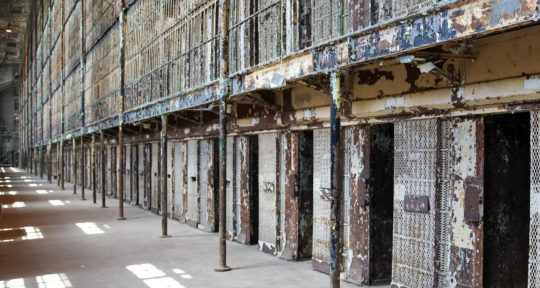Through horror movies and TV shows, we’re often conditioned to think of former psychiatric hospital facilities as places to fear. The fact that many of these locations now sit abandoned doesn’t help—nor do the stories of overcrowding that circulated before deinstitutionalization began in the mid-1970s.
On a recent trip to Buffalo, New York, I decided to confront my own fears and visit the Richardson Olmsted Campus, once home to the Buffalo State Asylum for the Insane. Unlike many of the other former asylums currently surrounded by rusting fences and “No trespassing” signs, the grounds and several buildings of the Richardson Olmsted Campus are open to the public.
There are 13 buildings in the complex: Three have been repurposed into a luxury hotel and the remaining 10 are still in a state of suspended ruin, abandoned since 1974. Public tours take visitors through two of the vacant buildings and into a renovated corridor of Hotel Henry. But more than offering a stunning before-and-after comparison, exploring the Richardson Olmsted Campus also provides an intimate glimpse into the complicated history of mental health care in the U.S.
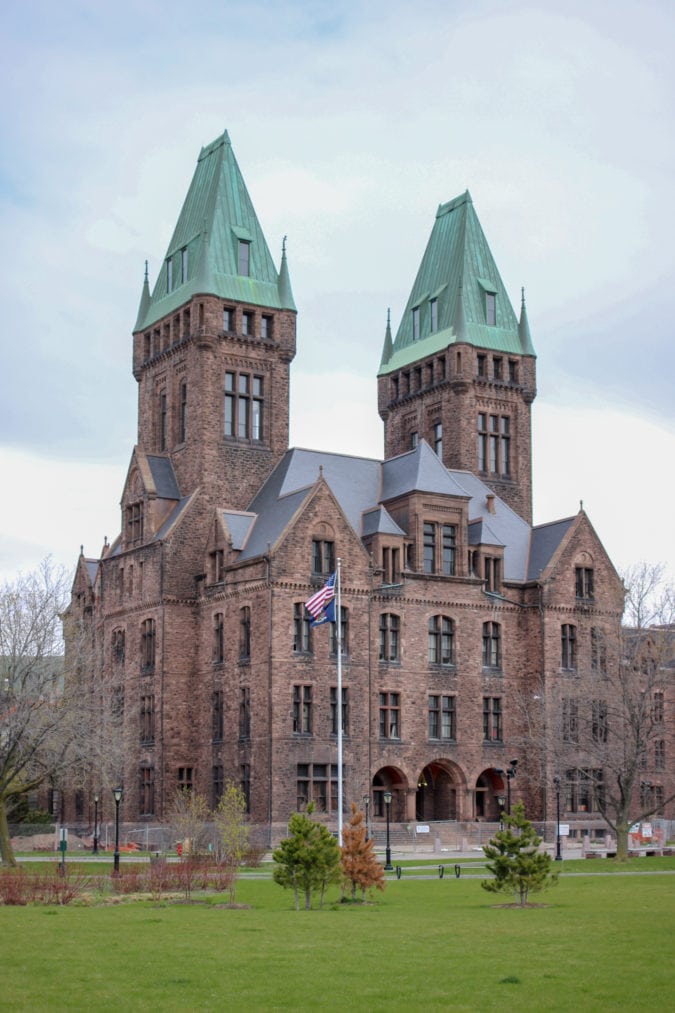
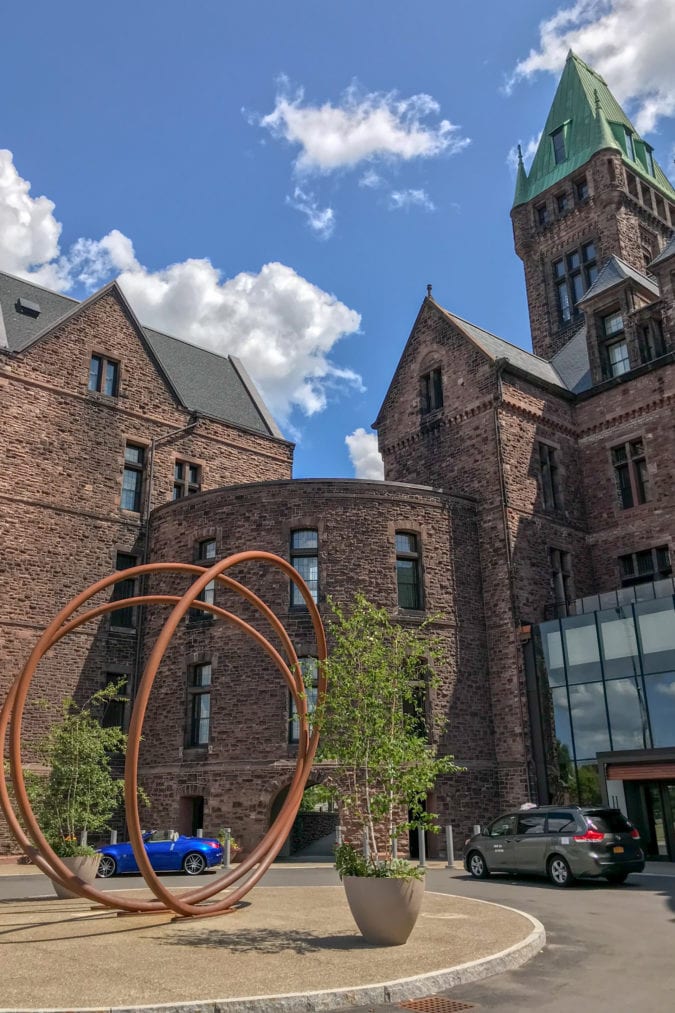
Innovative design
Construction on the complex began in 1872 and the process brought together three innovative thinkers and designers of the time: Henry Hobson Richardson, Frederick Law Olmsted, and Dr. Thomas Story Kirkbride. Richardson, a prominent American architect, pioneered the style referred to as Richardsonian Romanesque, an interpretation of 11th- and 12th-century Roman design. Olmsted, popularly known as the father of American landscape architecture, designed some of the most famous parks around the country, including New York City’s Central Park. Working with Kirkbride’s plans, the men tried to use architecture and landscape design to create a space conducive to treating mental illnesses.
“It was built in the late 1800s when Buffalo was really having its heyday,” says Christine Krolewicz, the manager of planning and operations for the Richardson Olmsted Campus. “We think of that as a time when Buffalo was in a position to start thinking about social issues.” The word “asylum” may have negative connotations today, but “it was actually really meaningful to have what was called an ‘asylum’ in your community at that time because it meant that you were a big enough city to take care of people,” Krolewicz says.
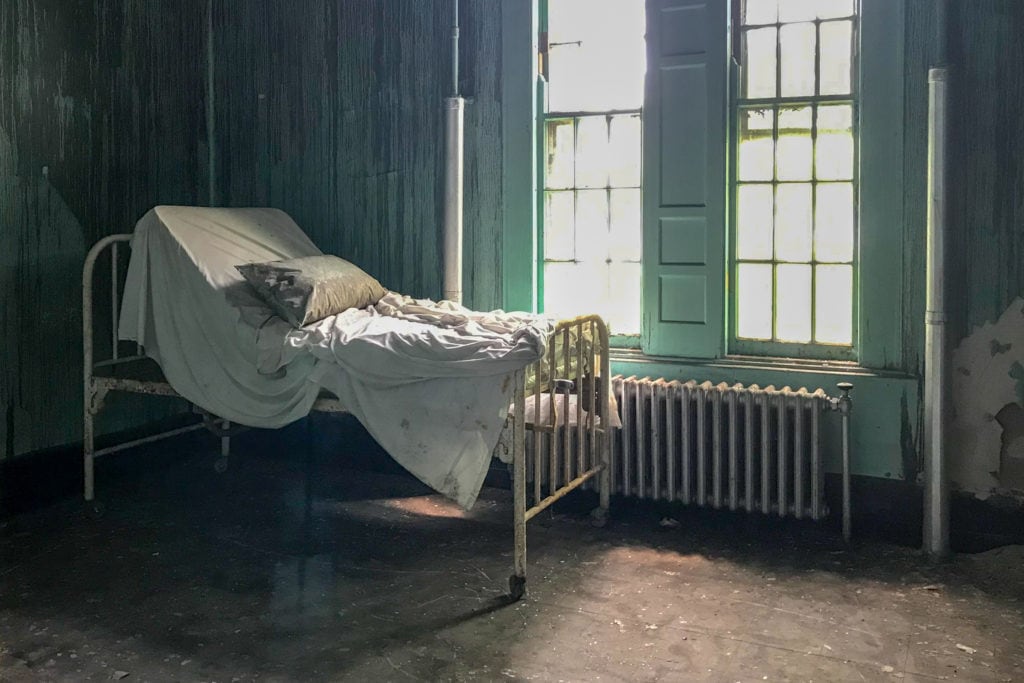
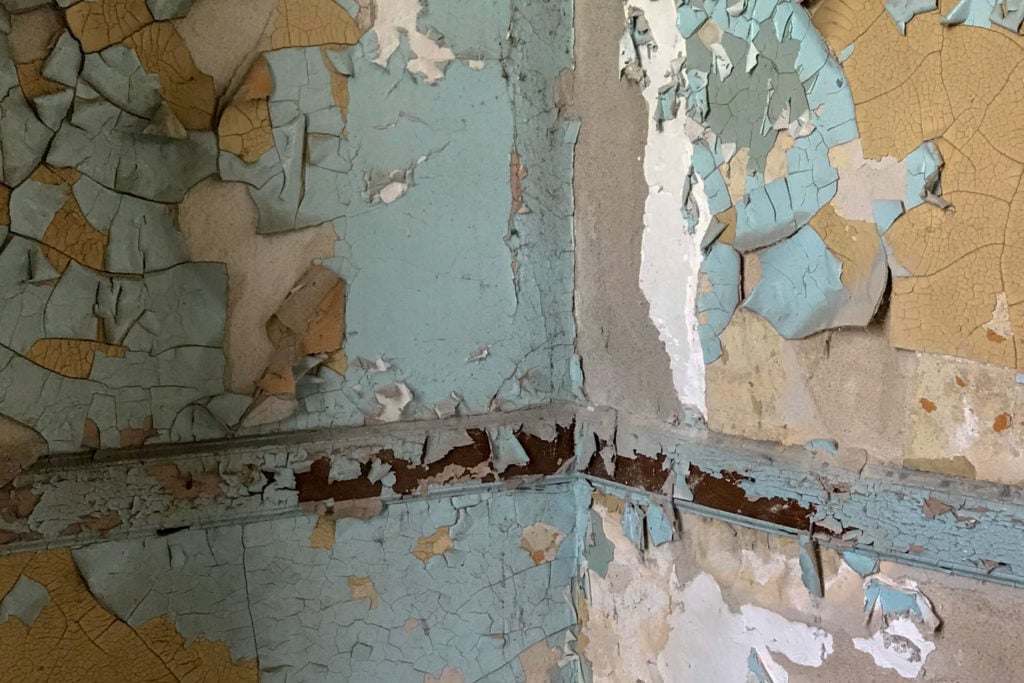
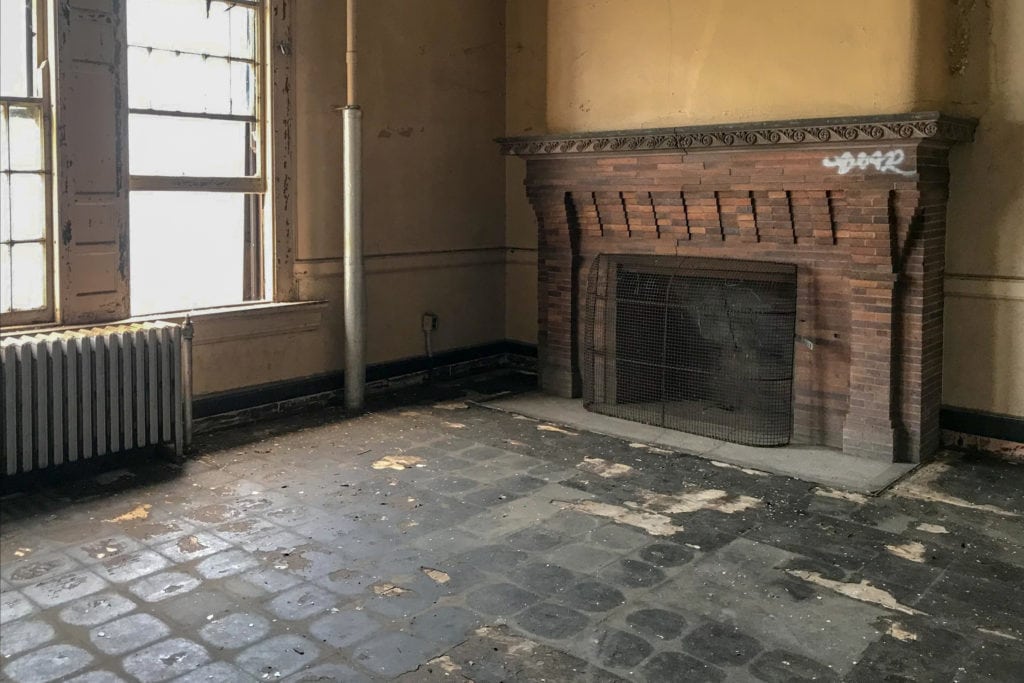
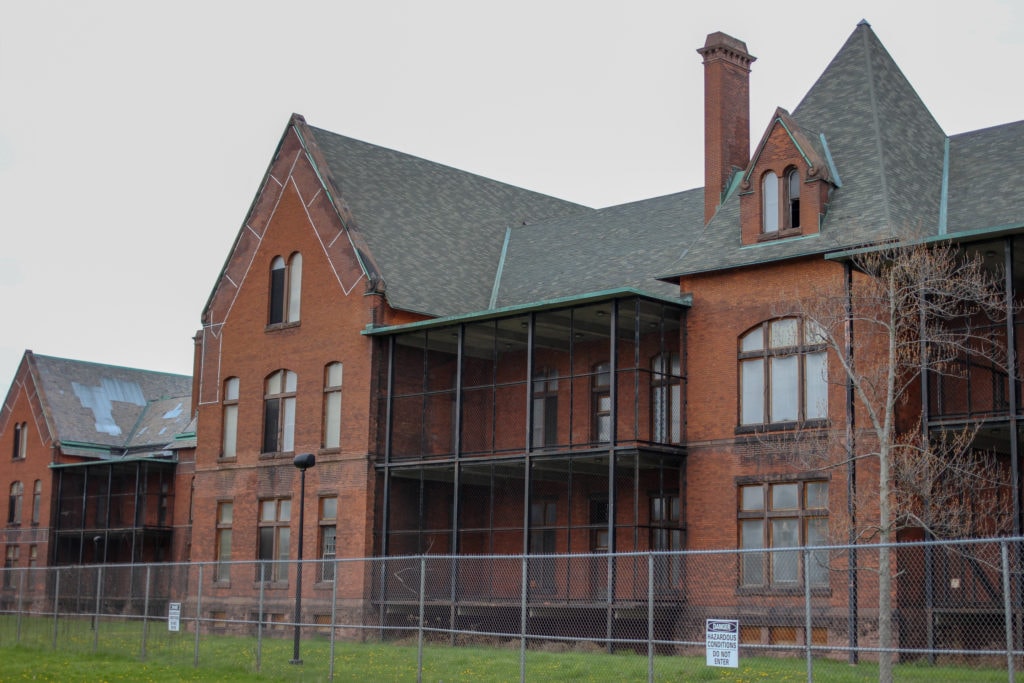
Krolewicz, a certified planner with expertise in historic preservation and adaptive reuse, says that Richardson’s imposing, institutional design—particularly the main building’s two iconic towers—was very much intentional. It showed that the asylum, and the city of Buffalo, was capable of caring for those with mental illness and could provide a safe haven for patients.
This idea was reinforced by Kirkbride’s plan to create an environment conducive to the healing process. Many of Kirkbride’s other asylums around the country have either been torn down or have fallen into disrepair since this form of mental health treatment fell out of favor in the 1970s.
“We’re very lucky in Buffalo that after 40 years of neglect, our city leaders and state leaders came around to really pull through and they’ve made the decision to save this building,” Krolewicz says.
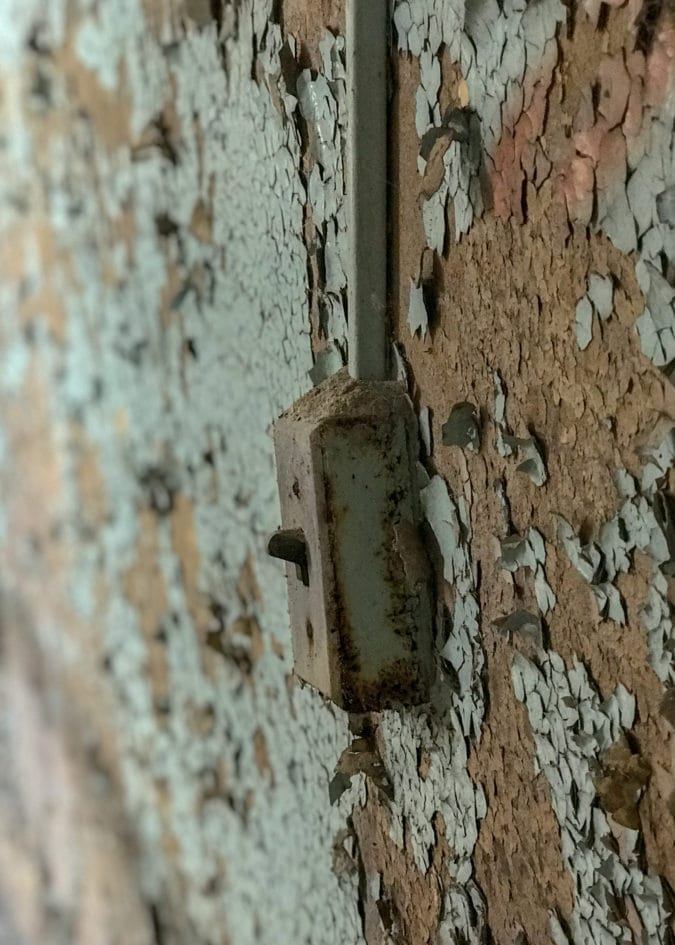
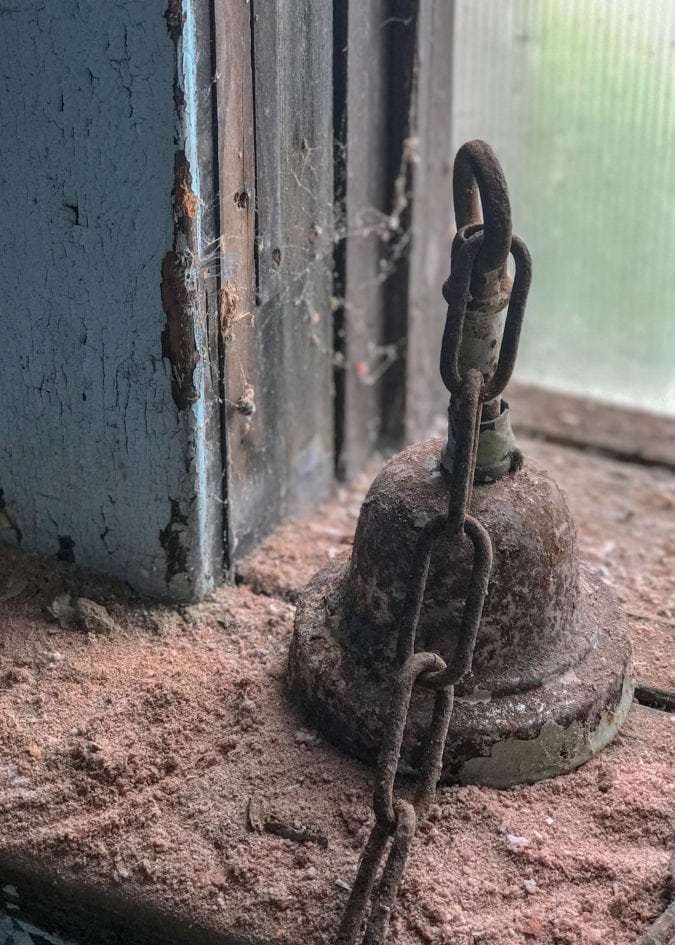
The 200-acre property was designed to provide a lush, green space for patients. Before modern pharmaceutical treatment, “the environment itself—the beautiful building and grounds—was supposed to be the method of healing,” Krolewicz says. “We love to focus on that aspect, because I think a lot of people don’t associate that with when they think of an asylum. But at the time an asylum really meant a respite, almost like a retreat.”
About half the acreage was used for a working farm. Occupational therapy was encouraged, including weaving, ceramics, and woodworking. A large portion of the property was designated as “pleasure grounds” for patient recreation, some of which have been restored according to Olmsted’s original plans.
“It was designed as a therapeutic landscape, very much like Central Park, where there are meandering pathways that would be calming and stimulating for the mind,” Krolewicz says.
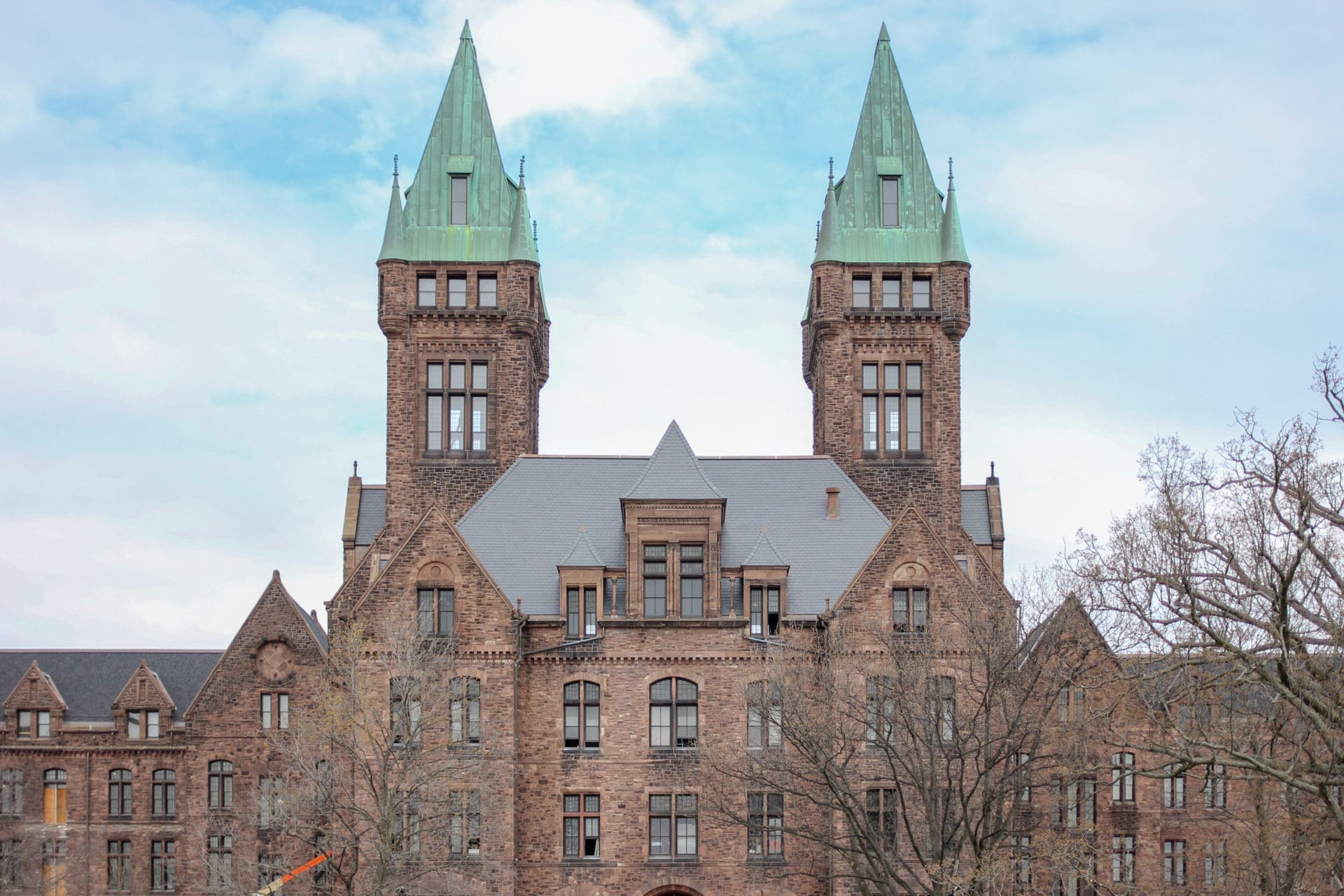
Preserving the past
Though the Richardson Olmsted Campus is open year-round, public tours are only available from May through September, and they sell out quickly. Tours begin in the renovated administrative building and continue into one of two vacant hospital buildings, both of which have similar floor plans.
As we walk into a light-filled curved corridor, I notice the small details first: a dusty bell, an old light switch, and doors stacked on the ground. The corridor leads us into a wing of patient rooms, each one slightly different than the last. Some have seen minor fires and now have charred door frames; others became a canvas for graffiti after the complex was abandoned.
The hallway terminates in what was once the “day room,” where patients could socialize with each other in front of large windows and a fireplace—an important part of the healing process, Krolewicz says. The buildings are mostly empty, with the exception of a few wheelchairs, metal bedside tables, and hospital beds scattered throughout the wing—a grim reminder that these corridors once housed hundreds of people.
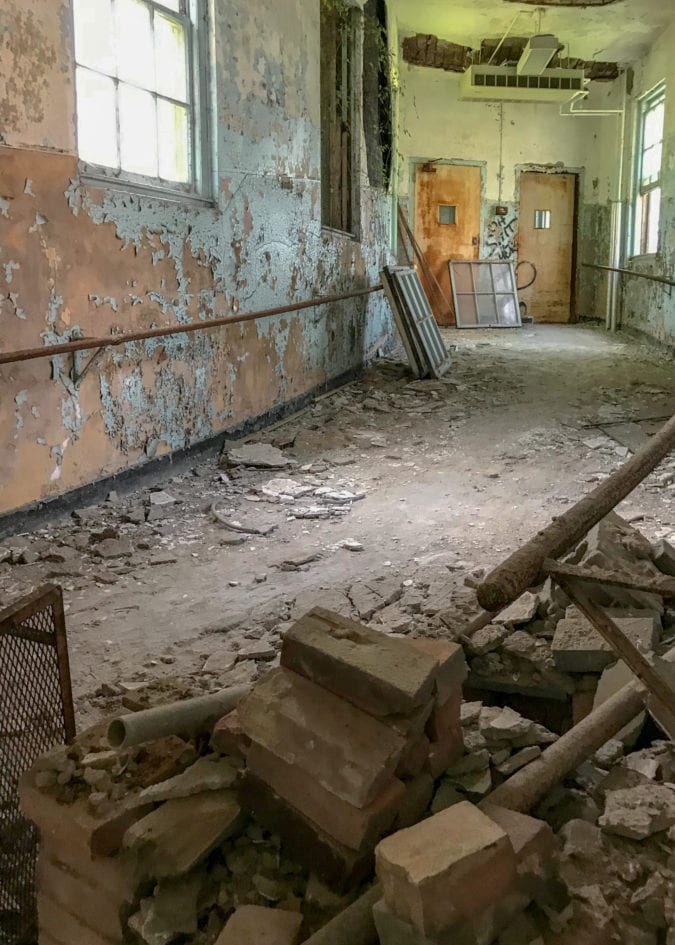
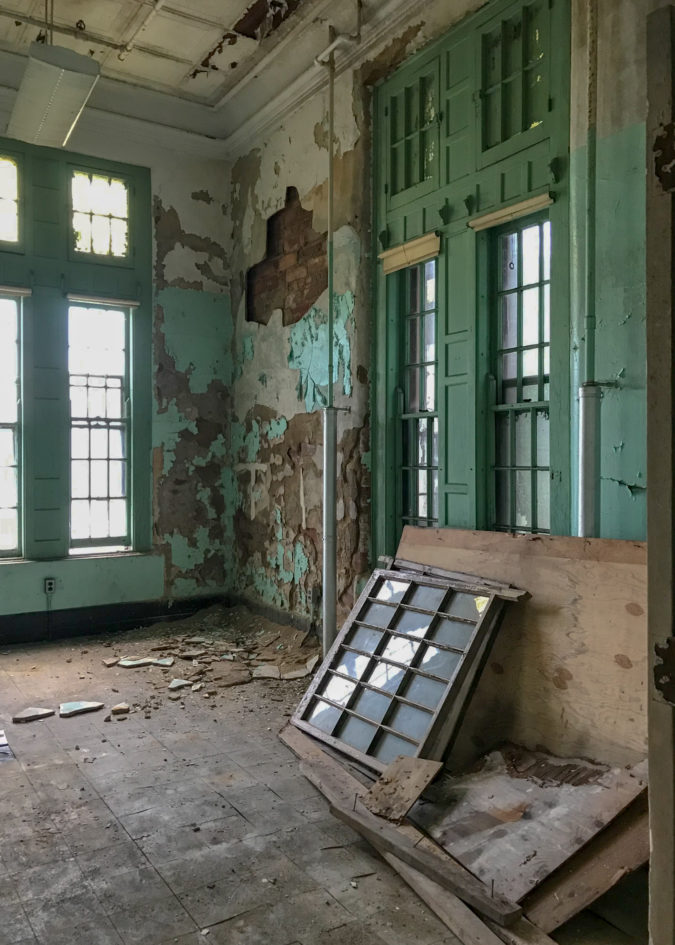
The complex was built at a time before electricity and because light and air flow were considered integral to the healing process, natural light fills the 210-foot-long hallways and 16-foot-high ceilings. In the three buildings that became Hotel Henry, there were 660 windows that needed to be either restored or replaced during the renovation process.
Porches—resembling cages—located off the main corridor weren’t part of the building’s original design, but they were added when patients were no longer given free rein of the grounds.
“I think on the tours overall, what people walk away with is that the buildings are a lot more peaceful than they expect—including this space, which looks like a cage from outside, but when you’re inside it, it just feels like an opportunity to have that fresh air,” Krolewicz says. “I think we get some people who are disappointed because they think that there’s going to be something spooky. But they walk away pretty impressed with the level of detail of the design.”
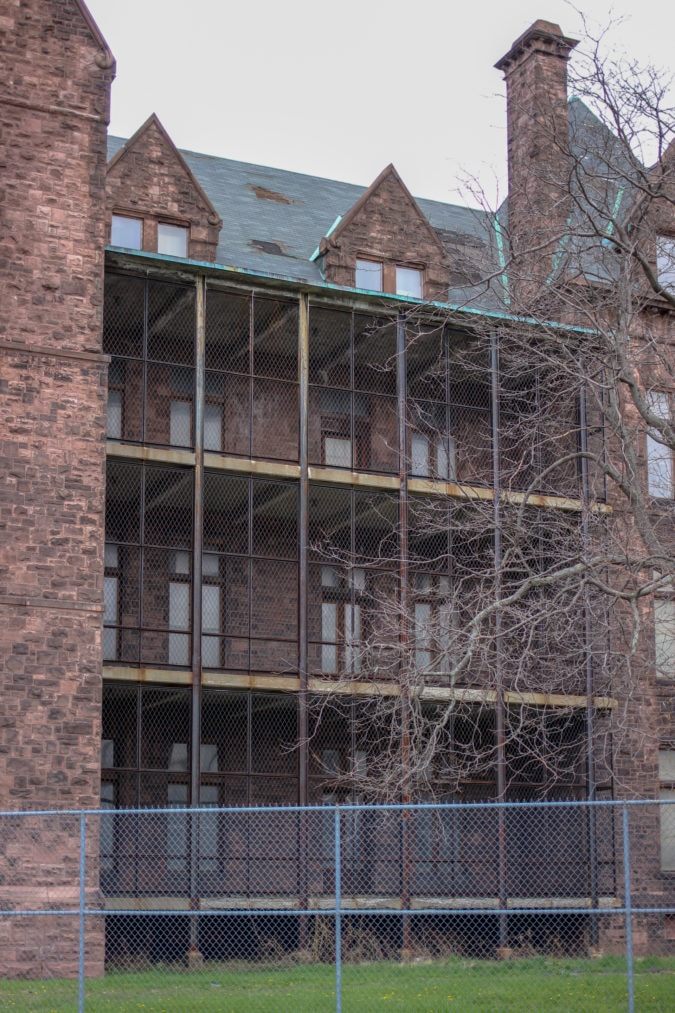
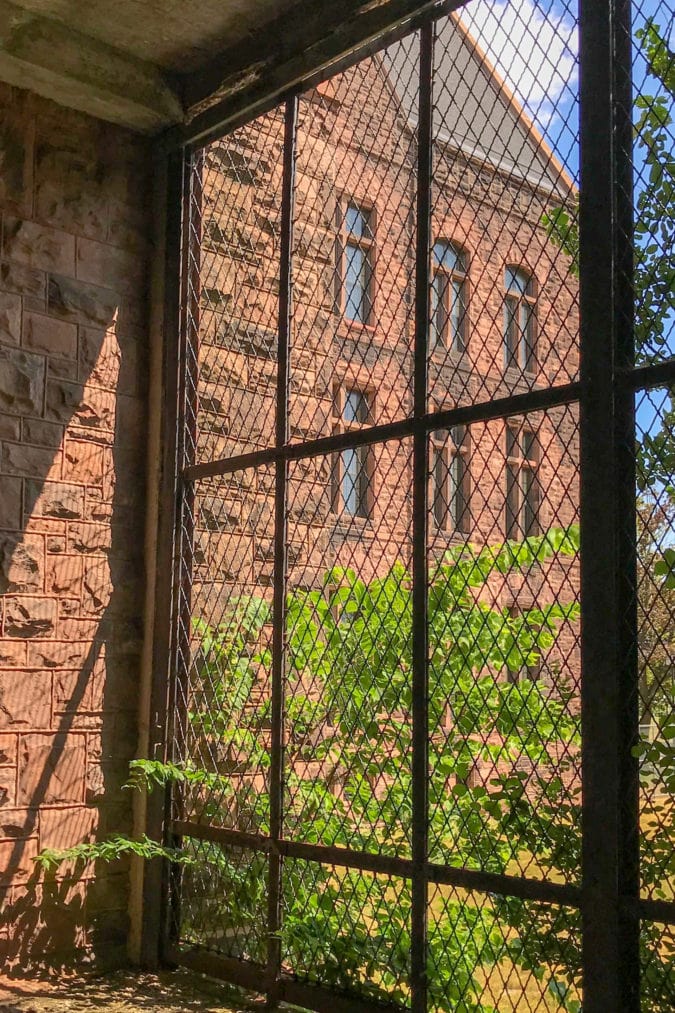
In fact, while some former hospitals have capitalized on the public’s fear, offering dedicated ghost hunting and paranormal activity tours, the Richardson Olmsted Campus instead focuses on the complex’s goal of hope and healing. “We are trying to be respectful of the history here, especially because we have people who come on tours who were patients here, or had family who lived here or worked here in the past,” Krolewicz says. “So many people have connections to this building. If we were to cater to [the ghost hunting] audience, I think it would alienate some other audiences.”
After visiting some of the vacant buildings, we get a glimpse of the future with a look inside Hotel Henry. A hallway of guest rooms provides a stark before-and-after look into the renovation process. In addition to private events, Hotel Henry hosts community events including a jazz series, a holiday market, outdoor movie screenings, and a weekly public yoga class. According to Krolewicz, because so many Buffalonians have a personal connection to the Richardson Olmsted Campus—or were curious about the grounds for a long time—the collaboration with Hotel Henry is “really important to help us realize our mission of welcoming people [back] to this building.”
Looking to the future
The complex is a National Historic Landmark, which is both an advantage and a challenge, Krolewicz says. “We want to maintain as much of the historic material and character as possible—and these projects wouldn’t be possible without historic tax credits, financially,” she says. “On the flip side, it does pose restriction. A hotel wouldn’t normally have 15-foot wide hallways.”
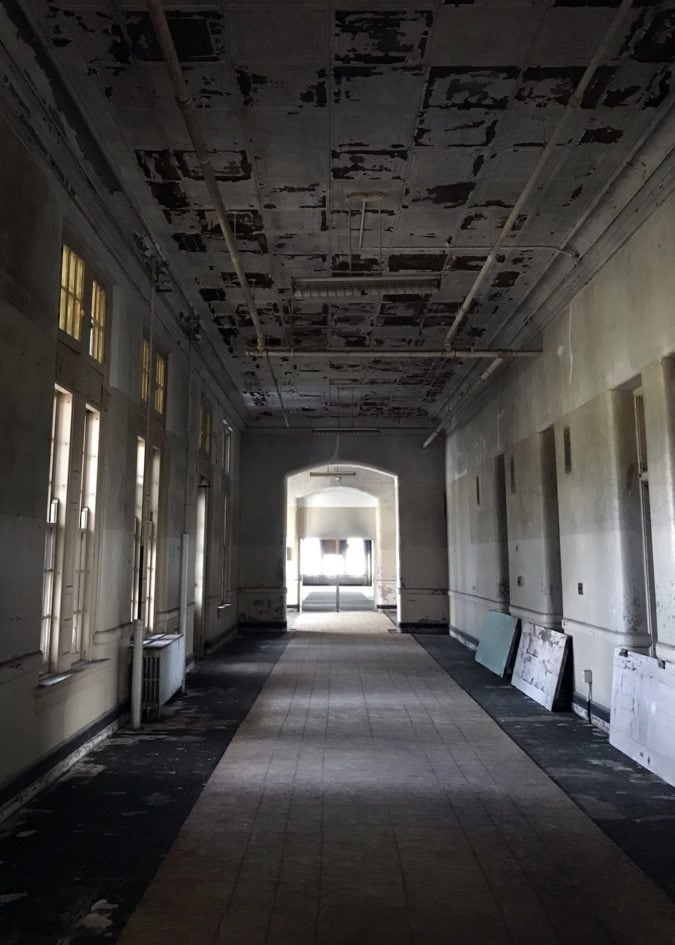
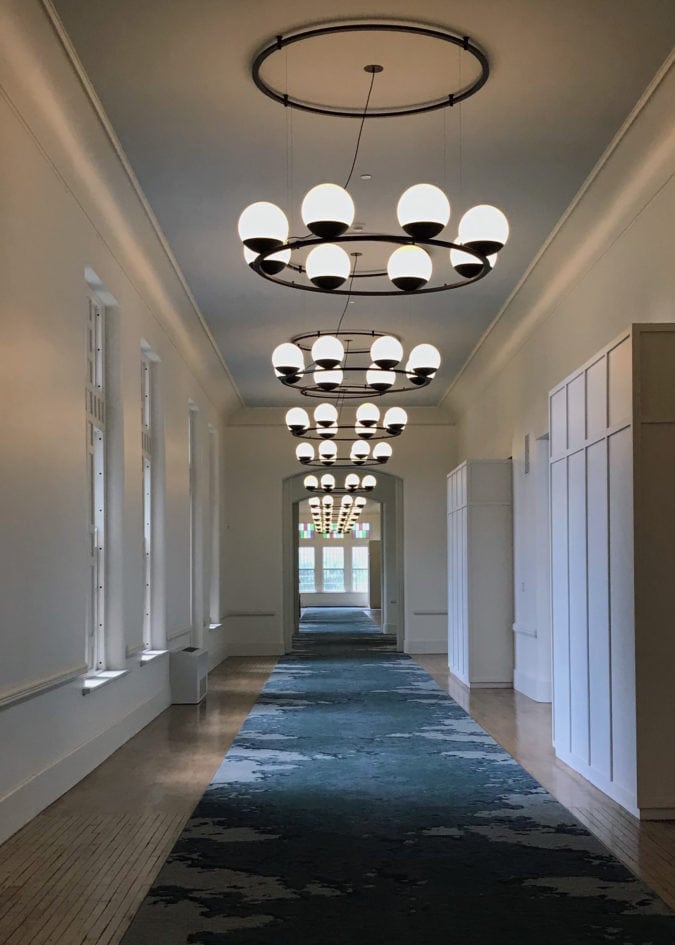
Next up on the agenda is the transformation of two buildings on the eastern side of the campus into a live-work space for local artists and other professionals. “That’s going to be geared toward young professionals, entrepreneurs—people that can use that communal space to see clients, to work together, to be inspired, and take advantage of that natural light,” Krolewicz says.
Three more buildings will be turned into a university-based retirement community. “We’re looking to call it a lifelong learning center,” Krolewicz says. “It would be geared toward older generations and being able to live in a community where they have access to services and amenities at Buffalo State College.” The Richardson Olmsted Campus’ location within a cultural district is another draw—the Albright-Knox Art Gallery and the Burchfield Penney Art Center are both just a short walk away.
According to Krolewicz, five of the buildings will remain vacant for public tours, preserved in their current state of ruin as “living relics.” She adds, “But the long-term goal is to save all the buildings, find a new purpose for each of them, and have each be put to its best use.”
If you go
Historical tours of the Richardson-Olmstead Complex are available May through September. Hotel Henry Urban Resort Conference Center is now open for reservations.


